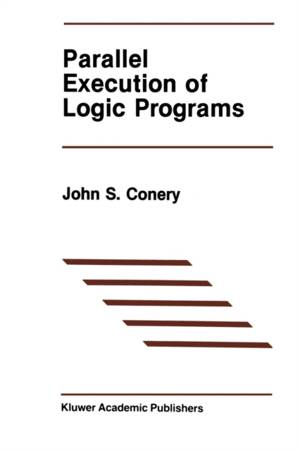
- Afhalen na 1 uur in een winkel met voorraad
- Gratis thuislevering in België vanaf € 30
- Ruim aanbod met 7 miljoen producten
- Afhalen na 1 uur in een winkel met voorraad
- Gratis thuislevering in België vanaf € 30
- Ruim aanbod met 7 miljoen producten
Zoeken
Omschrijving
This book is an updated version of my Ph.D. dissertation, The AND/OR Process Model for Parallel Interpretation of Logic Programs. The three years since that paper was finished (or so I thought then) have seen quite a bit of work in the area of parallel execution models and programming languages for logic programs. A quick glance at the bibliography here shows roughly 50 papers on these topics, 40 of which were published after 1983. The main difference between the book and the dissertation is the updated survey of related work. One of the appendices in the dissertation was an overview of a Prolog implementation of an interpreter based on the AND/OR Process Model, a simulator I used to get some preliminary measurements of parallelism in logic programs. In the last three years I have been involved with three other implementations. One was written in C and is now being installed on a small multiprocessor at the University of Oregon. Most of the programming of this interpreter was done by Nitin More under my direction for his M.S. project. The other two, one written in Multilisp and the other in Modula-2, are more limited, intended to test ideas about implementing specific aspects of the model. Instead of an appendix describing one interpreter, this book has more detail about implementation included in Chapters 5 through 7, based on a combination of ideas from the four interpreters.
Specificaties
Betrokkenen
- Auteur(s):
- Uitgeverij:
Inhoud
- Aantal bladzijden:
- 160
- Taal:
- Engels
- Reeks:
- Reeksnummer:
- nr. 25
Eigenschappen
- Productcode (EAN):
- 9781461291879
- Verschijningsdatum:
- 19/11/2011
- Uitvoering:
- Paperback
- Formaat:
- Trade paperback (VS)
- Afmetingen:
- 156 mm x 234 mm
- Gewicht:
- 240 g

Alleen bij Standaard Boekhandel
+ 213 punten op je klantenkaart van Standaard Boekhandel
Beoordelingen
We publiceren alleen reviews die voldoen aan de voorwaarden voor reviews. Bekijk onze voorwaarden voor reviews.








